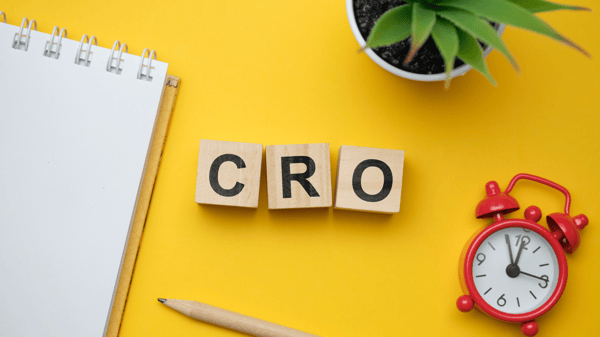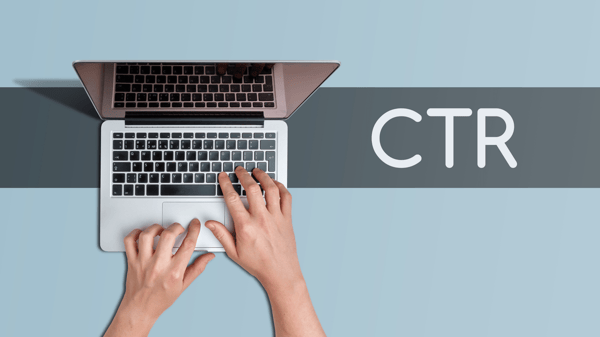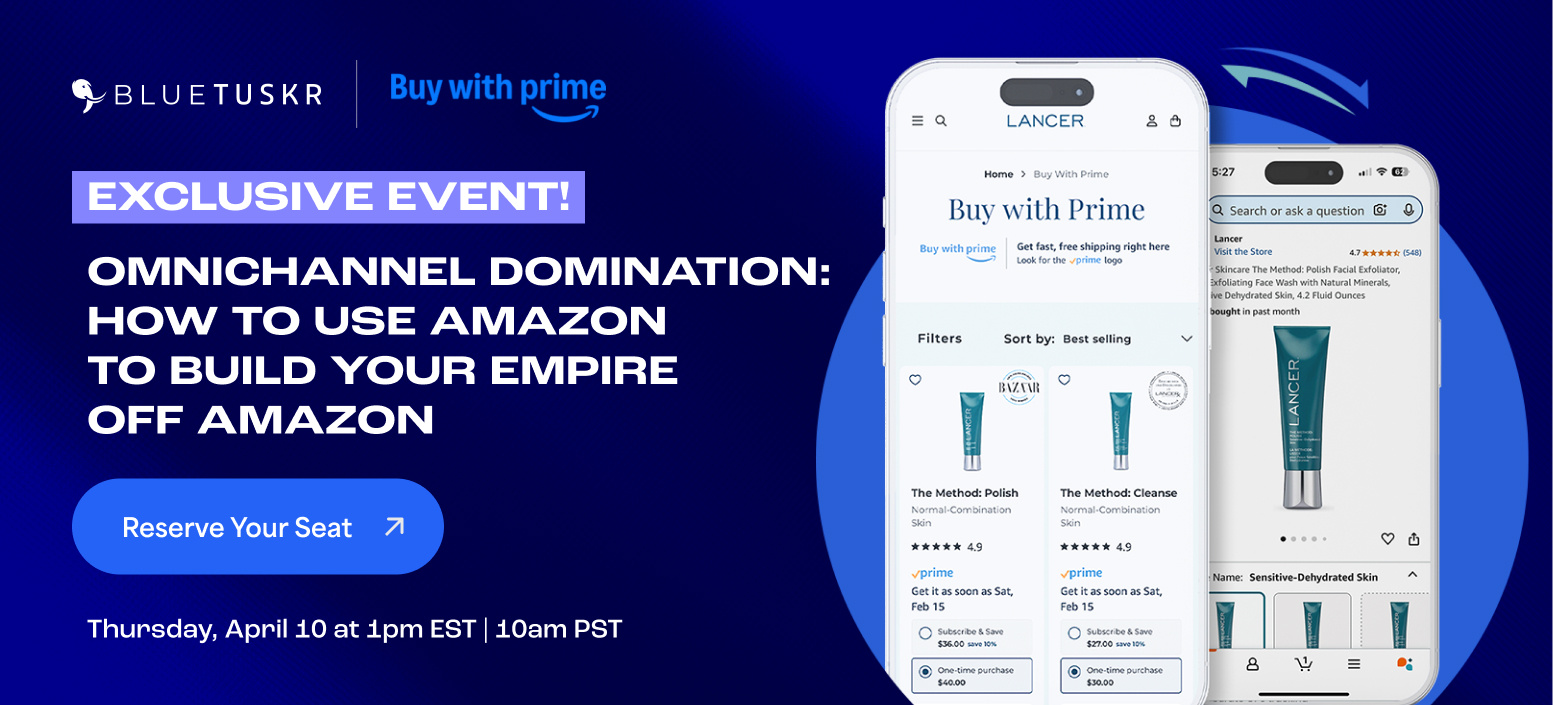What Should Your E-commerce Paid Advertising Budget Be?

Hello and welcome to whiteboard sessions with me Andrew Maff. I'm the founder and CEO of Bluetuskr, a full-service digital marketing agency for e-commerce sellers. And today I'm finally answering the age-old question of what your paid advertising budget should be for e-commerce sellers.
I have been dying to answer this question in a video format. So I can really kind of lay out the thought process behind this because there's a lot that goes into that question. Really the correct answer is what are you most comfortable with? Especially if you're just starting out, if you've been around for a while, you already know what you've been spending.

What the Government Says
So it should be pretty obvious. And then you can just run this formula I'm about to show you and decipher what your budget should be. Or you can go by I think it's like small business.gov or something like that. They suggest that you spend six to 8%, on average marketing and advertising alone, and so 60% of your top-line revenue, so that's going to be your gross revenue to be doing $100,000 a month, they suggest spending between six and $8,000 a month. Now, that's their suggestion.
That's what they say the averages, that's not you, that's not your business, do whatever you want. That also I have no idea how accurate that is. Because of small businesses, our goal may not be true. But that's what the averages are. So outside of that, the question is now how do you decipher what it is.
Facebook Ads Scenario
So we're gonna go on a couple of assumptions here. And I'm just going to do some really basic math, and then you can obviously plug in your own actual numbers here. But what we're gonna do in this case, we're gonna do a scenario for Facebook ads, right? So on Facebook, the average cost per click right now is $1.20. And that's, you know, as of when I'm doing this video, so when you see this release date, that's what it is. But otherwise, as time goes on a few money changes. I also don't feel like doing that complicated math.
So we're gonna just say that the average cost per dollar, so we're gonna go with a $1 cost per click right? So we have a $1 cost per click, next thing we're going to want to know, is, let's say we do our average order value. So I had, so your average order value again, you know, this, but that is the average mountain that you are given or order not for a product. So someone on average orders two and a half products or something like that, what's that average amount. So in this case, we're gonna say $50, just for basic math, is your average order value.

Conversion Rate
And now we're going to say what your conversion rate is. So your conversion rate is going to be dependent on if you don't know any, you have any metrics at all to go off of, and you're just starting from scratch, you're gonna want to figure out what your website conversion rate is if you don't have any metrics at all, and you've completely started a new website, assume maybe two or 3%, we're gonna go with 4% In this scenario, which isn't great, but it's okay.
That's also very dependent on your product line, there's a website with a 10% conversion rate that still isn't performing as well as it should. And there are some with a point 5% conversion rate that is fantastic. And doing great kind of depends. But the other thing we're going to say is that this is your 4% conversion rate on your website, or if you know for this specific channel, so let's say for this channel, we're doing Facebook, you know that your conversion rate is 6%. And you're gonna want to adjust for that. But in this case, we're just gonna say our conversion rate is 4%.
What to Target?
So now we want to do is what are we targeting? So we want let's just say, you know, we're not asking a lot at all, and we just want to x ROI, right? Nothing crazy. Nothing, we're probably going to break even on this, but it's just learning like, Screw it. That's what we want, right? So just again, just for basic. Now, what we want to figure out is, you know, what should our budget be?
So what we're going to go with here is, let's say we need to get let's, let's figure out when you spend for one conversion, right? So for one conversion, we're gonna need about 25 clicks is a 4% conversion rate, right? So we get 25 clicks should have one conversion, right? And if we get one conversion of 25 clicks, that's clearly going to cost us. Yes. So we're gonna say this is $25. Right.
And so now our C, this is also our CPA. So our cost per acquisition is $25. And we spent $25, to get an average order value of $50. We have hit our 2x ROI, right? That's $25 made 50 Take away the 50 costs you made 25. So super easy, really straightforward right now the question is what should your budget be though? So if we need $25 to get one conversion, great. Facebook is horrendously has been Known to need 50 conversions in a seven-week, I'm sorry, to seven-day period.

Daily Budget
So in a one-week period, they leave the learning phase. So basically Facebook has gathered enough data based on the conversion that you're targeting, now teach itself how to optimize based on the audience you've provided. So in this case, we need 50 versions and a week, dividing 50 conversions, that's basically going to equate to $1,250 a week. Or anyone else who wants to know if you want to do it on a daily budget, which is how you typically plug that in, that's 178 57.
So you can call that 180 a day. Or if you want to do it on a monthly basis, it's 5446 43. Right? So that's per month, that's per day. So he asked me what my budget is. And I tell you, it's $178 a day, here's the other thing you have to keep in mind. One, this is for Facebook to leave its conversion, leave its learning phase, Google doesn't necessarily need 50 conversions. And Facebook doesn't really either, which I'll touch on in a second here.
Well, let's assume Google wants the same thing, chances are your cost per click gonna be a lot higher on Google. But because of the buyer intent, your call, your conversion rates going to be a lot higher as well. Whereas on Facebook, as the buyer intent is lower, probably going to have a lower cost per click, but you're going to have a lower conversion rate as well. So you kind of have to keep that in mind.
But assuming that Google is the same thing, this might even be higher. But for Facebook, delete the learning phase, that's basically the learning phase for one campaign, or if you have multiple ad groups in that campaign, and let's say you're doing but bidding by specific ad group, or even if you're doing a CBO campaign, you need to have this for each ad.
So that you're looking at a couple $100 per ad group a day or something along those lines. So you got to think about that. Now, the other thing is, though, is that's not always the case, 50 conversions in a week, they're just starting out and you're looking at this going, I can't afford that I don't want to do that this isn't 100% accurate in terms of what it takes to leave the learning phase.
Facebook can definitely teach itself, they say that they need 50 conversions for up to seven days, we absolutely leave the learning phase a lot sooner, it just kind of depends on how much data you provide Facebook and things like that every Google it's the same thing. After a while, it'll leave the learning phase within seven days, no matter how many conversions you've given it.
But this is kind of an understanding to figure out like, Okay, how many conversions do I want, at this rate, provided that my cost per click is this and my conversion value is this. Now to actually fluctuate this and justify some of the pricing on what you're going to do or to basically justify like of reducing some of this and getting a better ROI or increasing your budget, you have other things you need to keep in mind as obviously your click-through rate, as well as your conversion rate.

Click-through Rate
So if you're obviously if you're at a lower click-through rate, and you want to target a higher click-through rate that could actually bring your cost per click down, in which case, if you heart if you target a better click-through rate might actually improve your conversion rate. So if you don't know your click-through rate, or clicks over your impressions, in which case, you're now targeting a better audience, that is, in fact, a better audience.
Good, see your conversion rate go up as well. Now, if your click-through rates go up, but your conversion rate is maintaining, or even worse going down, that could mean that your ad is misleading, because basically, people are clicking, but they're not seeing the same thing on the other side. Or it could mean that your website is having issues, maybe it's too slow, or something along those lines.
What other stuff that you can leverage here. Or obviously, what you're going to want to do is adjust for this number based on each platform. So in this case, I had a 4% conversion rate, we were assuming that's what our website was. But if I run ads for a little while and realize like, hey, my Facebook conversion rate is actually an 8%, then you'll want to adjust this. Either way, this is a very simple formula that is just thrown into a Google sheet or something to decipher what you think your advertising budget should be.
But what it really comes down to, especially if you're just starting off and don't have a database, the best thing to basically look at is what are you comfortable with spending to test because you have to figure out these numbers to decipher what your budget should be. You have the data, love this stuff in, and answer your own question. It's super easy to figure out. But if you don't get to kind of guess in the beginning, so it's more about your own comfortability and a business standpoint of how much money are you willing to spend to figure out what it is you need to spend? But that's how you do that.
That is how you figure that out, throw it into Google Sheet and live by it and you'll always know what your paid advertising spend if you disagree or you have further questions, of course, feel free to comment in any of the sections below wherever you're watching this. And then of course rate review, subscribe. We come out with these on a weekly basis. So feel free to also comment let me know another video you might like me to cover. But otherwise, I appreciate you joining and I'll see you all next time.
Watch the Video Here:








Leave a Reply